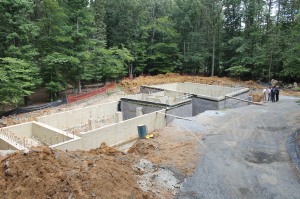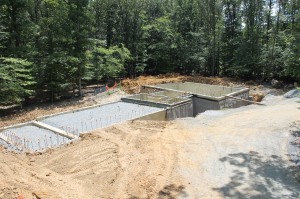Backfilling a foundation is an important step in building a home, but it can come with pitfalls. Once the concrete walls have cured, the foundation is waterproofed, draintile (and preferably drainboard) is installed, a qualified equipment operator “back” “fills” the area between the exterior wall and the designed grade level.
The fill can vary but a coarse, well-draining material is recommend to help keep the basement dry. Builder Magazine says “Site soils are fine if the natural soil in the area is mainly sandy or gravelly, but don’t use the existing soil from the site for backfill if it contains clay or organic material.” The backfill material can be specified in the plans.
Bartley Corp typically includes backfilling in the excavation scope of work. In this case, the backfill design called for a loose crushed rock so the builder decided to complete the work as it is a more time consuming installation.
The big mistakes made when backfilling can cause a cracked wall or a long-term water problem. A qualified equipment operator places the proper loads and moves the equipment in a safe manner not to cause too much pressure against the concrete walls when compacting. In some cases bracing the walls is necessary to ensure the loads are not too much for the concrete walls when they are still curing.







